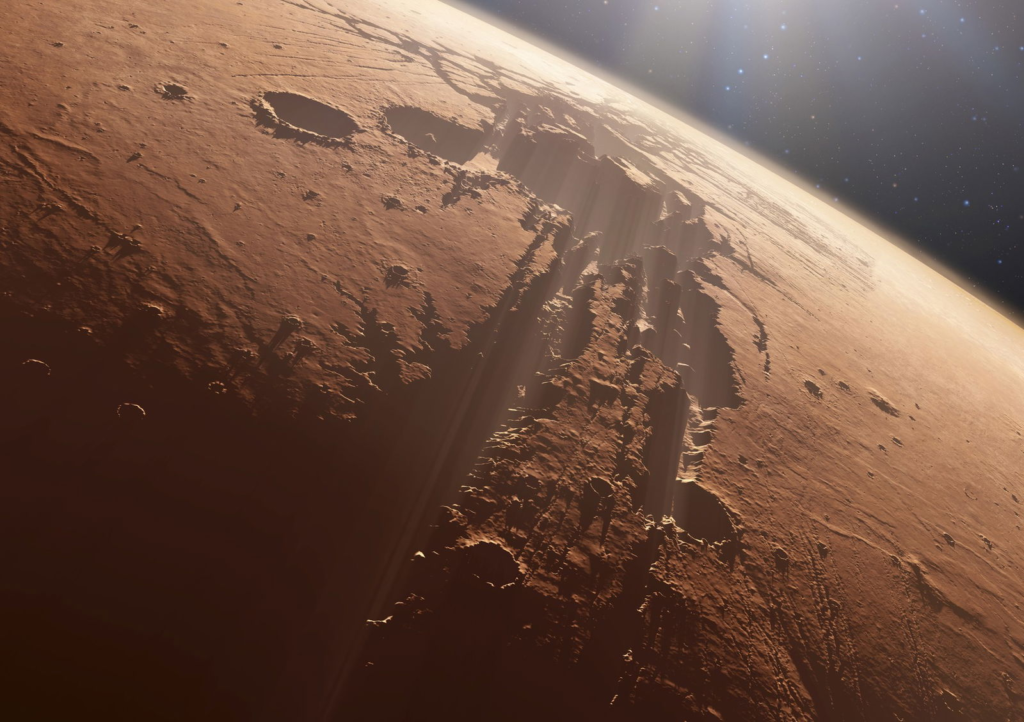NASA continues to push the boundaries of space exploration, and its recent mention of five galactic settlements associated with Mars has reignited excitement about the possibility of humans living on another planet. These settlements represent the next step in humanity’s quest to become a multi-planetary species. With Mars as the primary focus for colonization, NASA’s conceptual settlements highlight the agency’s vision for how humans might one day live and thrive on the Red Planet. This article explores the details of these settlements, their purpose, and what they mean for the future of space colonization.

The Significance of Mars in Space Exploration
Why Mars?
Mars has always been considered a prime candidate for human colonization due to its proximity to Earth and its surface conditions, which offer more promise than other planets in our solar system. While still inhospitable by Earth standards, Mars presents opportunities for resource utilization and scientific discovery that make it a key target for future missions. Water ice has been detected beneath the Martian surface, and with advances in technology, scientists believe it may be possible to establish self-sustaining colonies on the planet in the future.
The Challenges of Martian Colonization
Living on Mars would be no easy feat. The planet’s thin atmosphere, extreme temperatures, and exposure to harmful radiation from space are just a few of the obstacles that must be overcome. NASA and other space agencies are working on solutions to these challenges, including the development of protective habitats, advanced life support systems, and sustainable energy sources. The mention of five specific galactic settlements indicates that NASA is moving forward with concrete plans for how humans might live and work on Mars.
NASA’s Five Proposed Galactic Settlements
1. Ares Base
Ares Base, named after the Greek god of war (the Roman counterpart of Mars), is envisioned as the primary hub for Mars exploration. This settlement would serve as a central research and operational base for astronauts and scientists working on the planet. Located near Mars’ equator, Ares Base would benefit from relatively mild temperatures and access to sunlight for solar energy generation.
2. Olympus Station
Named after Olympus Mons, the tallest volcano in the solar system, Olympus Station is designed to focus on harnessing geothermal energy from beneath Mars’ surface. This settlement could potentially provide power to other Martian outposts and serve as a hub for scientific research on the planet’s geological history. The base’s proximity to volcanic regions also offers access to unique natural resources.
3. Valles Colony
Valles Colony, located within the massive Valles Marineris canyon, would take advantage of natural geological features to provide protection from cosmic radiation. By building the settlement within Mars’ vast canyon system, inhabitants would be shielded from harmful solar radiation, one of the most significant risks to long-term human life on the planet. The colony’s location also offers strategic access to minerals and other geological resources.
4. Hellas Settlement
Hellas Settlement is proposed for the Hellas Basin, a low-lying region on Mars that has a slightly denser atmosphere than the rest of the planet. The denser atmosphere could provide some natural protection against radiation, making it an ideal location for agricultural experiments. This settlement could focus on food production, utilizing Martian soil and advanced hydroponic systems to grow crops that would sustain future Martian colonists.
5. Elysium Outpost
The Elysium Outpost would be located near the Elysium volcanic region, another area rich in geological resources. This outpost is envisioned as a mining and industrial hub, where materials necessary for the construction of additional habitats and infrastructure could be extracted. Elysium’s proximity to volcanic features could also provide opportunities for geothermal energy production, further supporting Mars’ self-sufficiency.
The Role of Technology in Galactic Settlements
Life Support Systems
A critical component of establishing long-term settlements on Mars is the development of advanced life support systems that can sustain human life in the harsh Martian environment. NASA is exploring closed-loop systems that would recycle water, oxygen, and other vital resources, significantly reducing the need for resupply missions from Earth. These systems will be essential for creating self-sustaining colonies that can survive for extended periods.
AI and Robotics
AI and robotics will play a crucial role in the construction and maintenance of Martian settlements. Robotic systems could be used to prepare the terrain, build habitats, and perform routine maintenance tasks, reducing the workload on human settlers. AI technology will also help manage life support systems, energy production, and communication networks, ensuring that the settlements remain operational even in challenging conditions.
Energy Solutions
Power generation is another critical challenge for Martian colonies. While solar energy is an option, dust storms and limited daylight in certain regions may make it less reliable. That’s why NASA is also investigating other energy sources, including nuclear and geothermal power. The settlements, such as Olympus Station and Elysium Outpost, would be designed to harness the planet’s geothermal energy, providing a stable and sustainable power source for long-term habitation.
Conclusion: A Vision for the Future of Human Colonization
NASA’s mention of five galactic settlements associated with Mars paints an exciting picture of the future of space exploration. These conceptual settlements are not just theoretical; they represent NASA’s long-term vision of how humans might live and thrive on another planet. While many technological and logistical challenges remain, the development of these settlements brings us one step closer to the reality of becoming a multi-planetary species. As NASA continues to push the boundaries of space exploration, the dream of living on Mars becomes more tangible with each passing year.
About The Author
You may also like
-
The Economy is Booming Thanks to Eighty Percent Workforce Participation
-
NASA No Longer Using Boeing’s Spacecraft for Missions
-
Masrab: They Want to Overthrow the Iranian Leadership, and Work May Begin Soon
-
The United States Supplying Ukraine: An Unusual Aid with Medieval Weapons?
-
Kamala Harris Leads Nationally, But Trump’s Success Looms Over U.S. Elections
